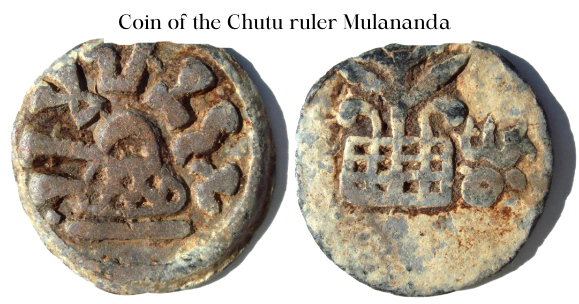Pictures
No machine-readable author provided. World Imaging assumed (based on copyright claims)., Public domain, via Wikimedia Commons
Arvind.vindhu, CC BY-SA 3.0
The kingdom of the Ikshvaku king Jayavarman was divided into Aharas, each under an executive officer, Vapatam (Vyaprita). This grant may be said to start the series of Brahmadeyas or gifts to Brahmins that increased in number and importance through the centuries. It also confirmed the decline of both Buddhism and Jainism. The biggest administrative division was the Rastra, a division identical to the Satavahana Ahara. But the Rastra division was known for the pre-Ikshvaku period in Andhradesa. The Alluru and Amravati inscriptions mention Rathas. The division below the Rastra was Gama. The official titles known to us are those of Mahasenapati, Mahatalavara, Mahadandanayaka, and Kosthagarika. A feature of the Ikshvaku period is the bearing of two or more titles by the same person.
The Salankayana administrative system had much in common with the contemporary Pallavas. The village headman was called Mutada or alterman, a title that does not occur elsewhere. The land grants incidentally throw some light on the administrative system. The kingdom was divided into the Visayas. While it is certain that the territory around the capital was not included in the Kudrahara-Visaya, we do not know what it was called. It has been shown that Ahara, Rattha, and Visaya denote the same territorial division, not more in extent than a modern district. The Visaya consisted of Grama and the Pallika or Pallika-Grama ( a hamlet). Each Visaya was supervised by an officer called Visayapati. The Desadhipati of some areas would seem to be in a similar position but under another name. Other officers subordinate to the Visayapati with poorly defined functions would be Ayuktakas, Niyuktas, Niyogas, Prajapurusas, and Vallabhas.
